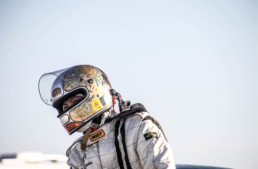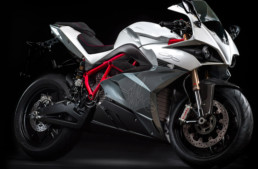Breaking a land speed record by reaching 255.122 mph in an electric motorcycle of her own design and construction isn’t enough for Swedish mechanical engineer and lecturer Eva Håkansson. After becoming the world’s fastest woman on an electric motorcycle in 2014, 2016 and 2017, the 37-year-old resident of New Zealand aims to break 400 mph by 2021.
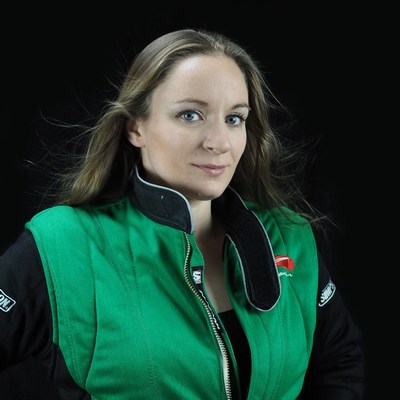
“About 80 percent of the hours, blood, sweat, and tears that went into the KillaJoule are mine,” Håkansson told Guinness World Records in 2016. “The rest was built by family and friends. The motorcycle was built from scratch in my two-car garage behind my house.”
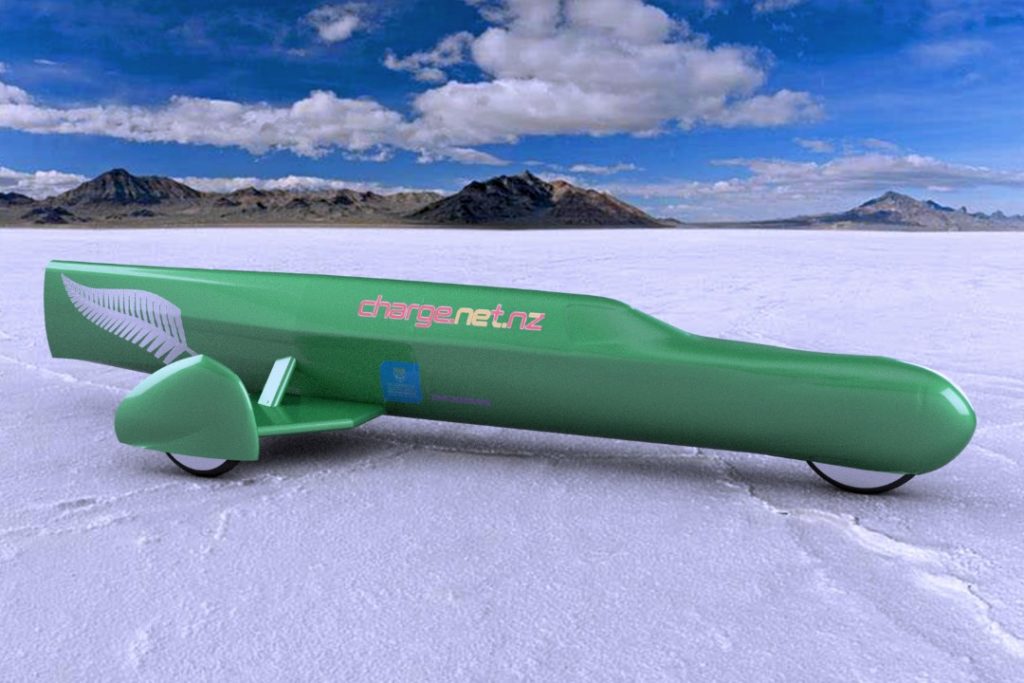
“With a theoretical chance at 265 mph, I turned out on the track deciding to give it everything it had. The speedometer in the bike `only’ showed 259 mph, but I knew that it was a bit pessimistic (the front tire grows at speed and offsets the speedometer reading a little bit), but I wasn’t sure how much. When the timing folks reported on the radio that we had run 270.224 mph I knew this wouldn’t be my last year of racing. I was the world’s fastest female motorcycle rider, and 300 mph was simply too close to quit now.”
In 2016 Håkansson again broke the land speed record at Bonneville with 248 mph, and reached 255.122 mph in 2017. Speed and motorcycles are part of her DNA, literally; her father, Sven Håkansson, used to build motorcycles and her mother was the family mechanic. In 2007 she and her father converted a Cagiva Freccia C12R-90—an 125cc Italian two-stroke motorcycle—into an electric version with equivalent performance to the original combustion engine motorcycle. Their ElectroCat passed the registration inspection and became the first street legal vehicle in Sweden in January 2008.
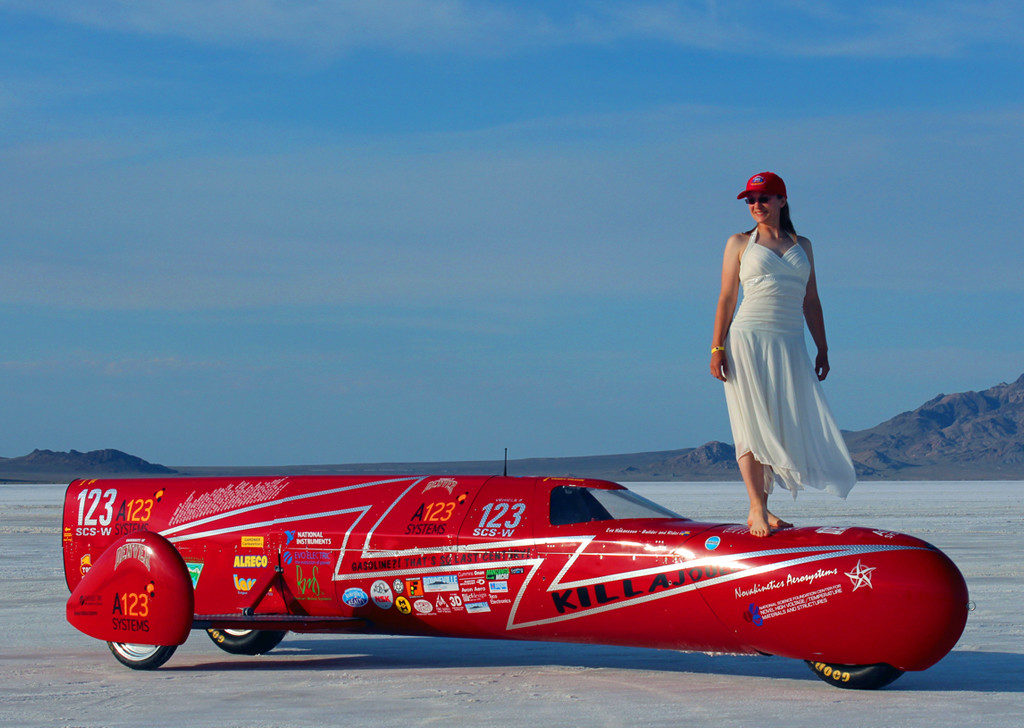
“How does it feel running for a speed record? That’s the second most common question I receive,” she added. “The most common is `How fast is it?’ The speed question is easy to answer, the other question is much more difficult.
“I’m not an adrenaline junky, actually quite the opposite. While it is definitely an experience of a lifetime, and a very privileged position, I find the record attempt runs very stressful and at times outright scary. It is quite claustrophobic and uncomfortable. I am strapped in and can’t move. The pressure to set a record is enormous, and the world is watching. When we get to the starting line, I sometimes just want to run away and go home. Or take a nap because I am exhausted from actually getting everything done on time.
“The drive itself is really short, just a few minutes, but can be quite an experience. Driving the KillaJoule is really easy, pretty much anyone could do it (provided that you are maximum 5-foot-2). You look toward the end of the track, twist the throttle and try to stay approximately in the middle. When you pass the finishing line, you roll off the throttle and push the brake chute button. You slow down over about a mile or two, and when you reach one of prepared access roads you turn off the track. That’s it. It’s the easiest part of my `job.’ But that said, it certainly isn’t free from emotions.
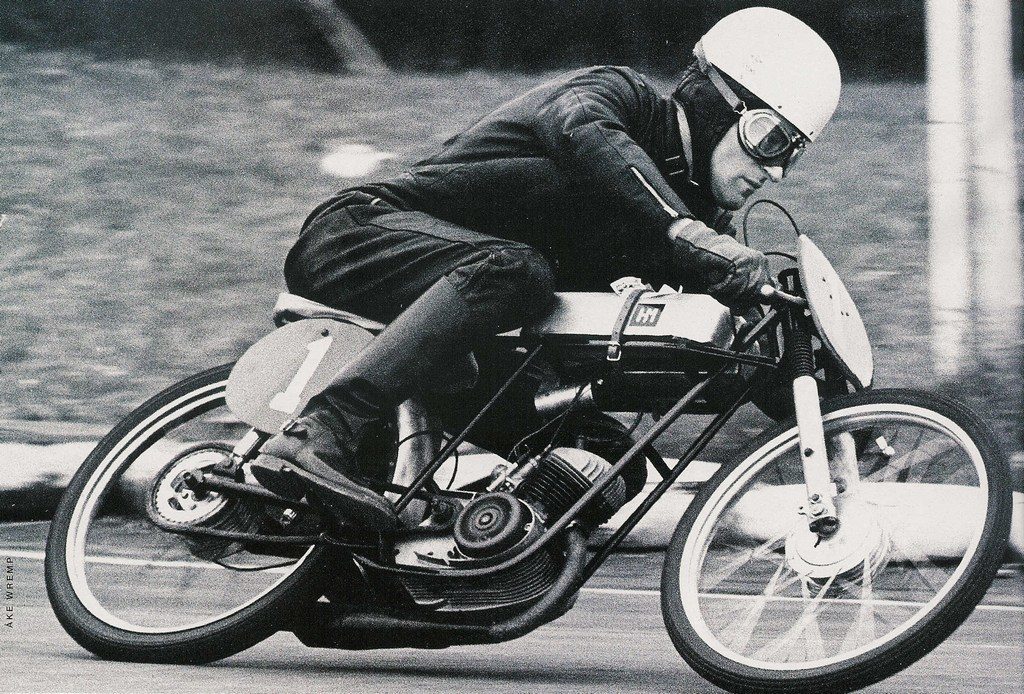

“It is known that stability problems can occur very suddenly, so it is quite nerve-wrecking. The vehicle is also extremely tight and claustrophobic. To be honest, that alone took a while to get used to. The relentless desert sun beating down doesn’t make it any more pleasant. But, at the same time, the feeling when everything works flawlessly is like magic. Years of work finally pays off, and it is like time stops. When I have finished a run, all my nervousness and discomfort quickly vanishes and is replaced by a huge grin. I say, `Well, that was easy, let’s do it again.’
Green Envy Replaces KillaJoule
According to Håkansson, Green Envy will be a battery-powered and streamlined sidecar motorcycle and it will look very much like the KillaJoule. However, there will be some major differences. First off, Green Envy will also have more than twice the power of KillaJoule, targeting over 1,000 horsepower; 1 megawatt equals 1,360 hp.
It will be built with the goal to become the world’s fastest motorcycle, electric or otherwise. The overall motorcycle record is 376 mph, set by Rocky Robinson in 2010. In order to fit the larger drivetrain, Green Envy will be about three feet longer than KillaJoule, which means about 23 feet. The cross-sectional area will stay the same, and the aerodynamics will be improved.
“There will also be a lot of subtle changes improving performance, handling, and reliability,” she explained. “Or simply speaking, we will learn from all the mistakes we made building the KillaJoule.
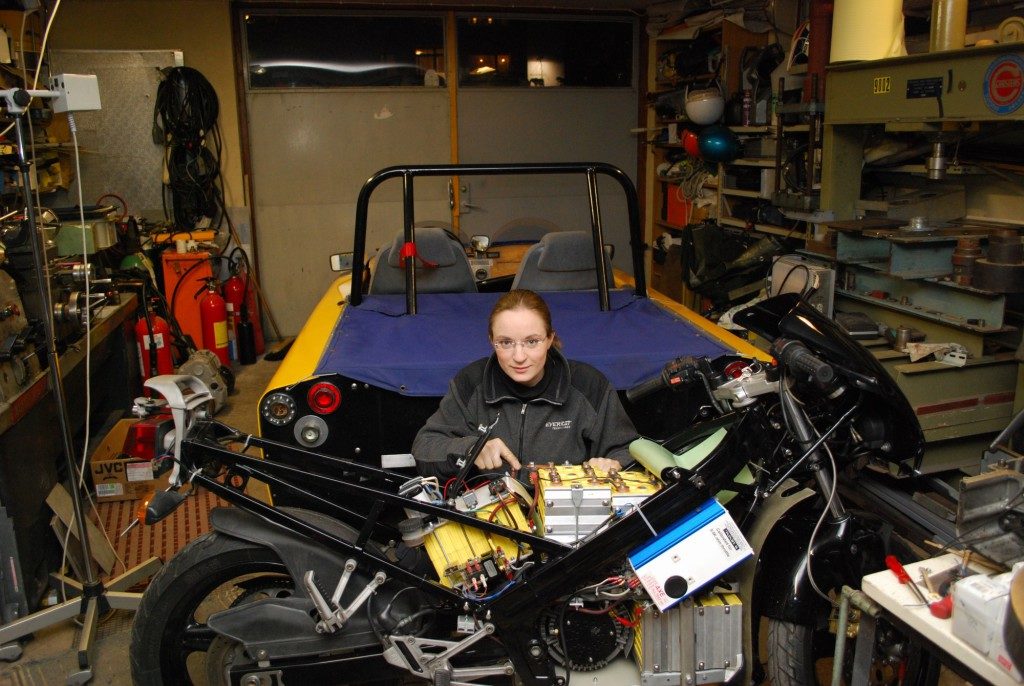
Green Envy Timeline
2019: Construction, in Auckland, New Zealand.
March 2020: First start at Lake Gairdner salt flats in South Australia, under the sanctioning of the Dry Lake Racers of Australia. “The goal is to make a safe, successful run and keep the rubber side down and the shiny side up,” Håkansson said. “A speed of 200+ mph would be considered a success. Anything higher than that would just be bonus!”
August 2020: “If time and budget allows, it would be possible to race the Green Envy at Bonneville as well, but that would require very generous sponsors.”
March 2021: “Back at Lake Gairdner salt flats. Target: 300+ mph, perhaps even 400+ mph if the planets line up and the angels are singing. (Yes, everything has to work perfectly for this to happen, that’s why it takes so long to prepare).”
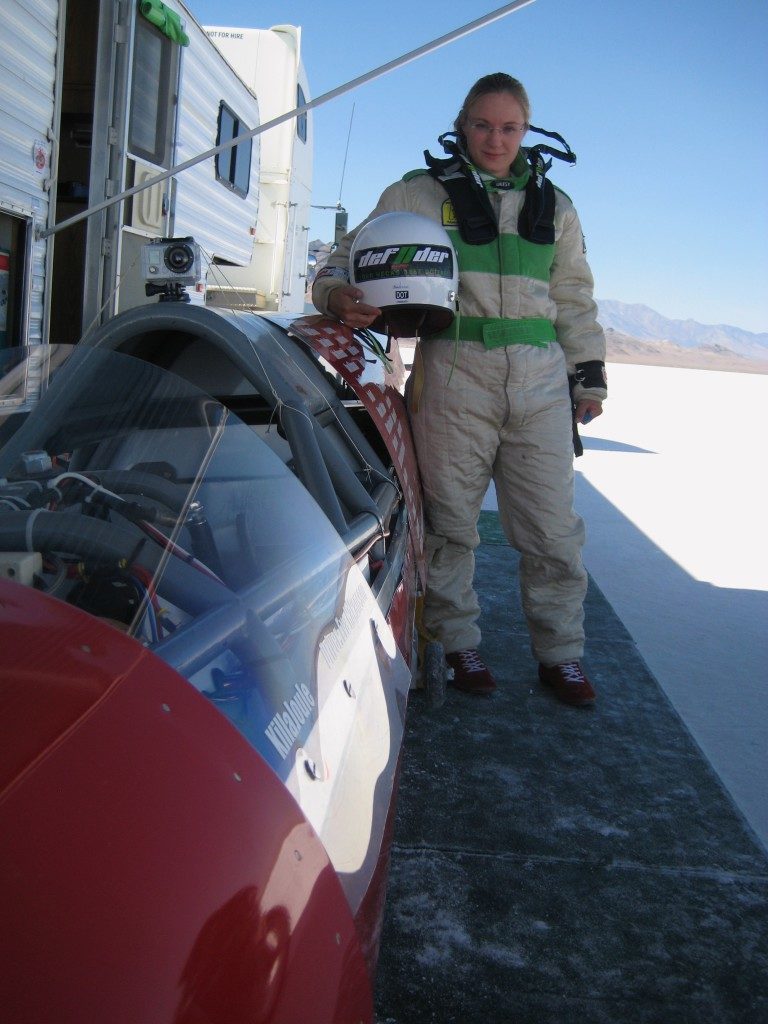
Related Posts
December 13, 2017
The Current: Moto-E World Cup To Race Energica Egos
MotoGP gets a new category in 2019, the…


